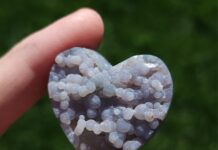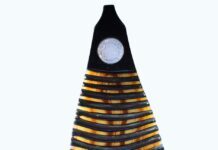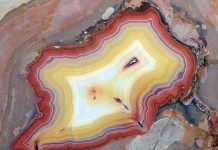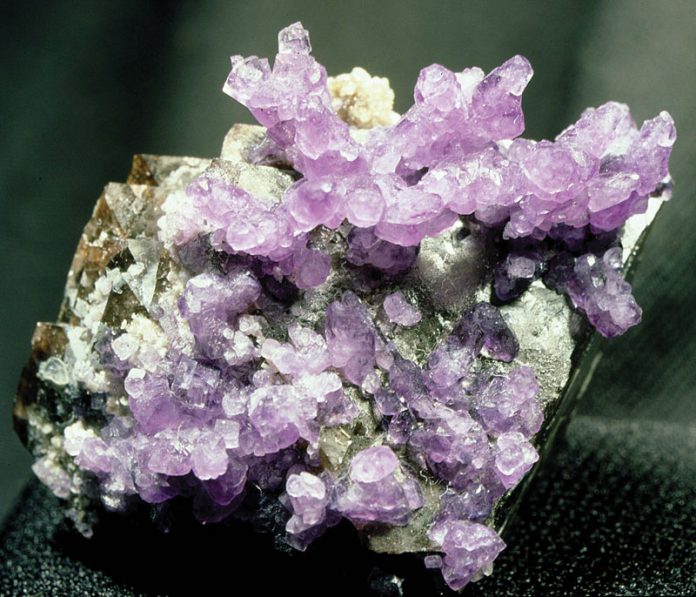
Carbonate minerals are one of the most important groups of minerals. Based on the element, carbon, they are also unusual. The native element carbon is one of the most vital elements on Earth. It forms thousands of useful compounds from hydrocarbons to carbonate minerals.
In the human body, carbon plays a role in almost all cells, from DNA to the brain. It is the key element to all the carbon compounds, including all the carbon compounds in your body! We think oxygen is important to life, and it is, but life as we know it would not exist without carbon. On the negative side, it combines with rain to form harmful acid rain.
The Carbonate Minerals Group and Its Unique Role
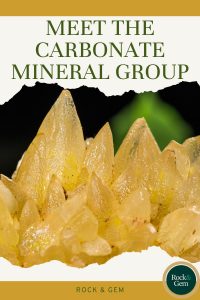
The Periodic Table of Native Elements is arranged numerically in 18 vertical columns. Carbon, at number six, heads column 14. The elements in this vertical group are unusual because each has an outer valence electron shell of four electrons to loan or share and four vacancies that are perfect for forming compounds.
To the left of carbon on the Table are the metal elements with three or fewer outer shell electrons to share or give up to form a mineral. To the right of carbon are the non-metal elements, each with more than four electrons in its outer shell, which tend to take in electrons to form a mineral.
With its outer shell electrons and vacancies, carbon can either take in or loan electrons. This is the basis for all the carbonate minerals and thousands of hydrocarbon minerals.
| Collectors will always find good examples of common carbonate minerals with dealers. Many are colorful, well-formed and often relatively inexpensive. Some common carbonate minerals are: ankerite, aragonite, aurichalcite, azurite, calcite, cerussite, dolomite, hydrozincite, malachite, rhodochrosite, rosasite, siderite and smithsonite. |
How Carbon Forms Carbonate Minerals
Oxygen and carbon combine in three simple ways – CO, CO₂, and C₃O₂. Carbon monoxide (CO) is an active chemical and a lethal gas to humans; Carbon dioxide (CO₂) is a common gas in the atmosphere. It is the waste gas we exhale, and it’s used by green plants during photosynthesis. Carbon trioxide (C₃O₂) is less common.
Carbonate minerals form because the CO 3 radical is receptive to joining other molecules. This is critical in forming carbonate materials.
Calcite: A Common Carbonate Mineral
Calcite (CaCO₃) is an example of joined molecules. It is a common carbonate and is abundant enough to form limestone, a major rock formation in the Earth’s crust. Limestone is often snow white and useful as a decorative rock. It is too soft in some ways, but if heated under pressure, limestone’s calcite recrystallizes and develops as marble, a hard decorative stone.
We quarry and use marble for public buildings and monuments. The huge deposits of marble at Carrara, Italy, are now nearly depleted. This was the source of marble for early artists like Michelangelo.
Dolomite and Magnesium Carbonate Minerals
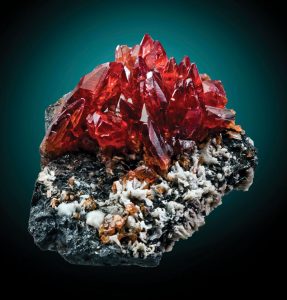
Private collection
If a calcite-rich solution contains magnesium, the mineral that forms is dolomite, calcium, magnesium carbonate (MgCa-CO₃). It forms the rhombic crystals that are common in some limestone regions. Limestone that has formed with magnesium in it produces a harder and darker form of limestone. Scientists distinguish this rock from limestone and call it dolostone.
Collectors who search for the quartz pockets in the Herkimer, New York, region are familiar with this harder dolostone.
How Acid Rain Affects Carbonate Minerals
Earth’s atmosphere holds a small percentage of carbon dioxide that is water-soluble. Rainwater can absorb some carbon dioxide, and the two form a weak carbonic acid. The formation of this acid in the atmosphere is one reason we are so concerned about carbon dioxide emissions.
This carbonic acid will attach to calcite, limestone and marble in any form, slowly dissolving the surfaces of buildings, monuments and statues. It also gets into the soil, rivers and streams, which is not good.
Weathering and Secondary Carbonate Minerals
Acid rain and ground waters also pick up plant acids and attack exposed primary ore deposits. This process is called weathering of primary ores and is the process that forms the secondary carbonate minerals we treasure.
In the dry, desert regions of the world, weathering can penetrate to great depths, well over a thousand feet. It attacks the primary minerals.
In the early days of mining, this process was important since carbonates are more easily smelted than primary ores. The ores mined by the Greeks at Laurium before the Age of Christ were secondary carbonates that were easy to smelt.
Ore Deposits with Limited Carbonate Minerals
There are ore deposits like in Cornwall, England, that produce few carbonate minerals even though they were subjected to severe weathering. The lack of significant limestone deposits accounts for this.
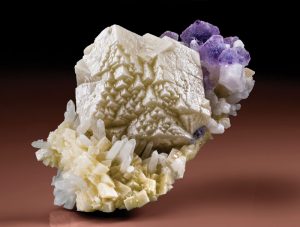
Courtesy Arkenstone, iRocks.com
The ores of Cornwall are close to the ocean, and rain is frequent, so weathering does occur, forming secondary minerals, but they lack carbon. These copper-tin deposits run out under the ocean, and miners working in these deposits can hear the rumbling of boulders on the ocean’s surface. In one case, drilling punched through the ocean floo,r and saltwater poured into the mine. A wooden plug was applied, and mining continued.
The Chemistry Behind Carbonate Mineral Formation
When a carbon atom combines with three oxygen atoms, the valences do not balance and CO₃ is eager to combine. This can be seen with available metal atoms like calcium to form calcite or calcium carbonate; zinc carbonate to form smithsonite; nickel carbonate to form gaspeite and iron carbonate to form siderite. These are all hexagonal minerals.
The same thing happens when the carbonate radical combines with calcium and develops as an orthorhombic mineral. Aragonite heads up a small group of orthorhombic carbonate minerals, including the lead carbonate cerussite, strontium carbonate strontianite, and barium carbonate witherite.
Copper Carbonates: Azurite and Malachite
Carbonates are more complex as more metals and radicals become part of a carbonate mineral’s content. The copper carbonates, azurite and malachite, are good examples. There are three copper atoms in a molecule of azurite, so this requires two carbonate radicals plus two hydroxide (OH) radicals to complete a molecule of azurite Cu₃(CO₃)₂(OH)₂.
Malachite has only two copper atoms in its molecule, but their valence differs from the copper in azurite. Like azurite, malachite has two carbonate radicals plus two hydroxyl radicals. The copper ions in azurite have a different valence from those in malachite and make azurite slightly less stable. Under the right conditions, azurite can actually give up a copper ion and will alter to malachite. This is why malachite can pseudomorph after azurite, a more stable crystal under broader conditions.
Aurichalcite: A Complex Carbonate Mineral
When zinc joins copper to form aurichalcite, the chemistry gets more complicated because the hydroxyl radical is needed, but it takes six copper ions and six hydroxyl radicals to form a molecule of aurichalcite (Zn, Cu)₅(CO₃)₂(OH). This is a great example of how complicated carbonate minerals can become. The more you look into the carbonates, the more chemically interesting they become.
Phosgenite: A Collector’s Carbonate Mineral
There are more complex carbonate minerals that collectors prize and are common enough to be available.
Phosgenite is a lead carbonate that is common enough to be available. The finest crystal specimens came from Monte Poni and Vecchio, near Iglesias, on the Island of Sardinia, Italy. Crystals from there are glassy, often smoky to pale yellow and lustrous with flat mirror-like terminations.
The best of this mineral I’ve seen was in the University of Rome, but it was stolen later. The Rice Museum has a nice suite of these hexagonal crystals. The mineral was found sparingly in some of the older lead localities in England, like Matlock and Cromford, Derbyshire, England. Lucky is the collector who has a phosgenite from any of these classic localities.
Rosasite: A Colorful Carbonate Mineral
Rosasite is a colorful carbonate that is readily available these days, thanks to Mexican sources. This lovely blue carbonate is a copper-zinc hydrate carbonate that is usually found covering the matrix with small micro-crystals of rich blue color. It often has a velvety sheen, and the color can range from light to dark blue. The main source has been Mina Ojuela, Mapimi, Durango, Mexico, where it was found in such quantity that it is still being marketed today. It has also been found in other copper deposits like Bisbee, but it is the Mexican locality that has made it readily available.
Early Mining and Secondary Carbonate Ores
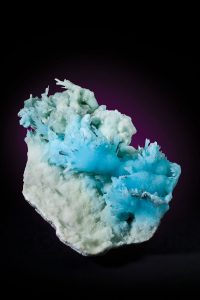
Jones collection
Keep in mind that the secondary carbonate minerals were critical in the early days of mining. They were easy to identify and easy to smelt. Bisbee is a classic example of this, as the mines there were so rich in secondary carbonate ores that the ore could be hauled by mule train to the Gulf of California and shipped around the Horn of South America to Swansea, Wales, and still show a profit!
The secondary carbonate minerals in the near-surface deposits were the most important source of revenue, which helped pay for the cost of expansion and development, so when sulfide ores were encountered, work could continue.
The carbonate minerals should be an important part of our mineral collections. They are abundant, colorful, interesting to study, and within the budget of all collectors. For the beginning collector, carbonate minerals are an excellent place to concentrate your efforts as you study and learn about minerals.
This story about the carbonate mineral group appeared in Rock & Gem magazine. Click here to subscribe. Story by Bob Jones.


